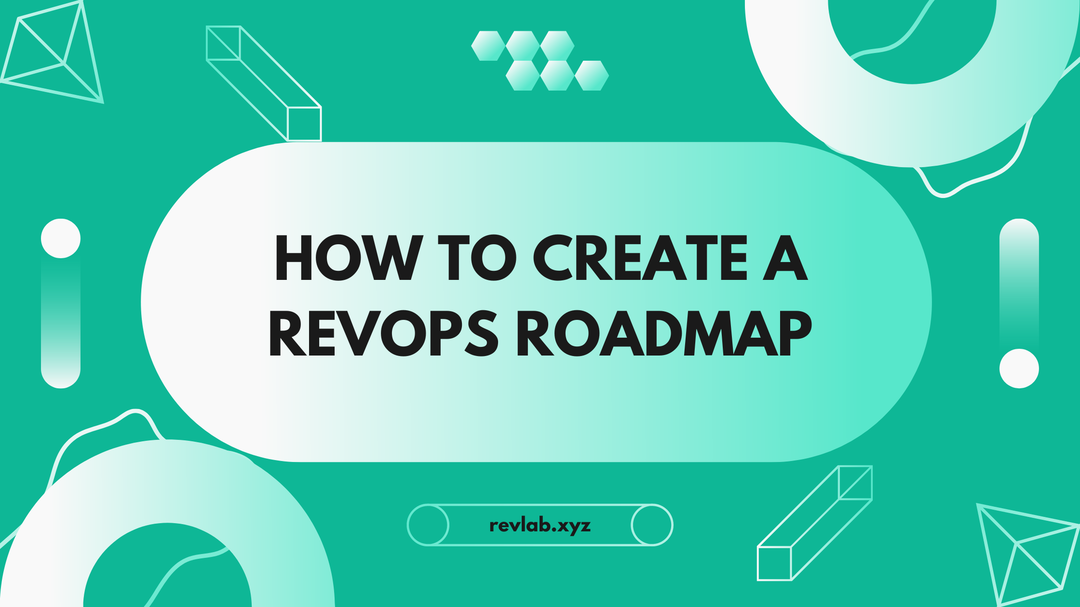How to Create a RevOps Roadmap

Introduction
When it comes to Revenue Operations, or RevOps, it's crucial to have a strategic plan of action. That's where a RevOps Roadmap comes into play. This step-by-step plan serves as your blueprint for aligning your revenue-generating teams, implementing the necessary processes and tools, and effectively tracking and optimizing your operations. So, how do you create a RevOps Roadmap? Let's dive in and explore the steps.
Understanding the RevOps Roadmap
Before we embark on the roadmap creation process, it's vital to understand what a RevOps Roadmap is. A RevOps Roadmap outlines the strategic plan and actionable steps your business will take to align its sales, marketing, and customer success teams, drive operational efficiency, and ultimately, increase revenue.
Benefits of a RevOps Roadmap
A well-crafted RevOps Roadmap has several key benefits. It provides clarity and direction, promotes alignment and collaboration, and offers a means to track and measure progress.
Providing Clarity and Direction
With a RevOps Roadmap, all teams have a clear understanding of what needs to be achieved, the steps to get there, and their role in the process. This clarity helps to prevent misunderstandings and ensures everyone is working towards the same goal.
Promoting Alignment and Collaboration
A RevOps Roadmap encourages alignment and collaboration among your teams. When everyone sees the big picture and how their efforts contribute to the whole, it promotes teamwork and enhances overall productivity.
Tracking and Measuring Progress
A RevOps Roadmap isn't just about setting goals; it's also about tracking and measuring progress. It provides benchmarks and key performance indicators (KPIs) that help you evaluate your progress and make necessary adjustments.
Steps to Creating a RevOps Roadmap
Ready to create your RevOps Roadmap? Here's a step-by-step guide to help you through the process.
Step 1: Establish Your Revenue Goals
The first step in creating your RevOps Roadmap is to establish your revenue goals. What are you hoping to achieve with your Revenue Operations strategy? Are you aiming for a specific revenue target? Do you want to increase customer retention? Having clear, measurable goals is crucial.
Step 2: Assess Your Current Operations
Once you have clear goals, it's time to assess your current operations. What processes and tools are currently in place? How are your sales, marketing, and customer success teams currently operating? This assessment will give you a baseline to measure future progress against.
Step 3: Identify Areas for Improvement
With an understanding of your current operations, you can start to identify areas for improvement. Where are there inefficiencies? What processes can be streamlined? Where are there opportunities for greater alignment or collaboration?
Step 4: Develop Your Strategy
Now it's time to develop your strategy. Based on your goals and areas for improvement, outline the steps your organization needs to take. This may include implementing new processes, adopting new tools, or providing additional training and support for your teams.
Step 5: Communicate Your Roadmap
Once your RevOps Roadmap is developed, it's important to communicate it to all relevant teams. This includes explaining the roadmap, the reasons behind it, and each team's role in achieving the goals.
Step 6: Track, Measure, and Adjust
Finally, your RevOps Roadmap should include a plan for tracking and measuring progress. Regularly review your roadmap, measure progress against your KPIs, and adjust your strategy as necessary.
Conclusion
A RevOps Roadmap is an invaluable tool for any organization embarking on a Revenue Operations strategy. It provides a clear, actionable plan for aligning your teams, improving efficiency, and driving revenue growth. By following the steps outlined above, you'll be well on your way to developing a robust RevOps Roadmap that will serve as your guiding star on your Revenue Operations journey.